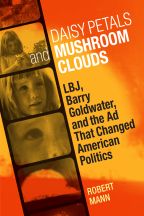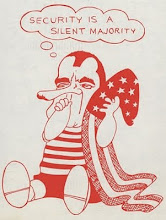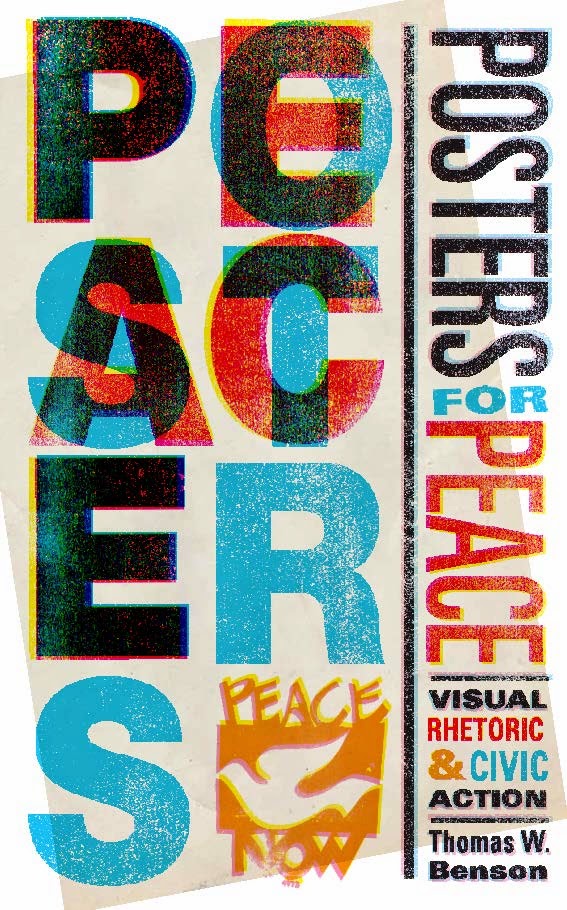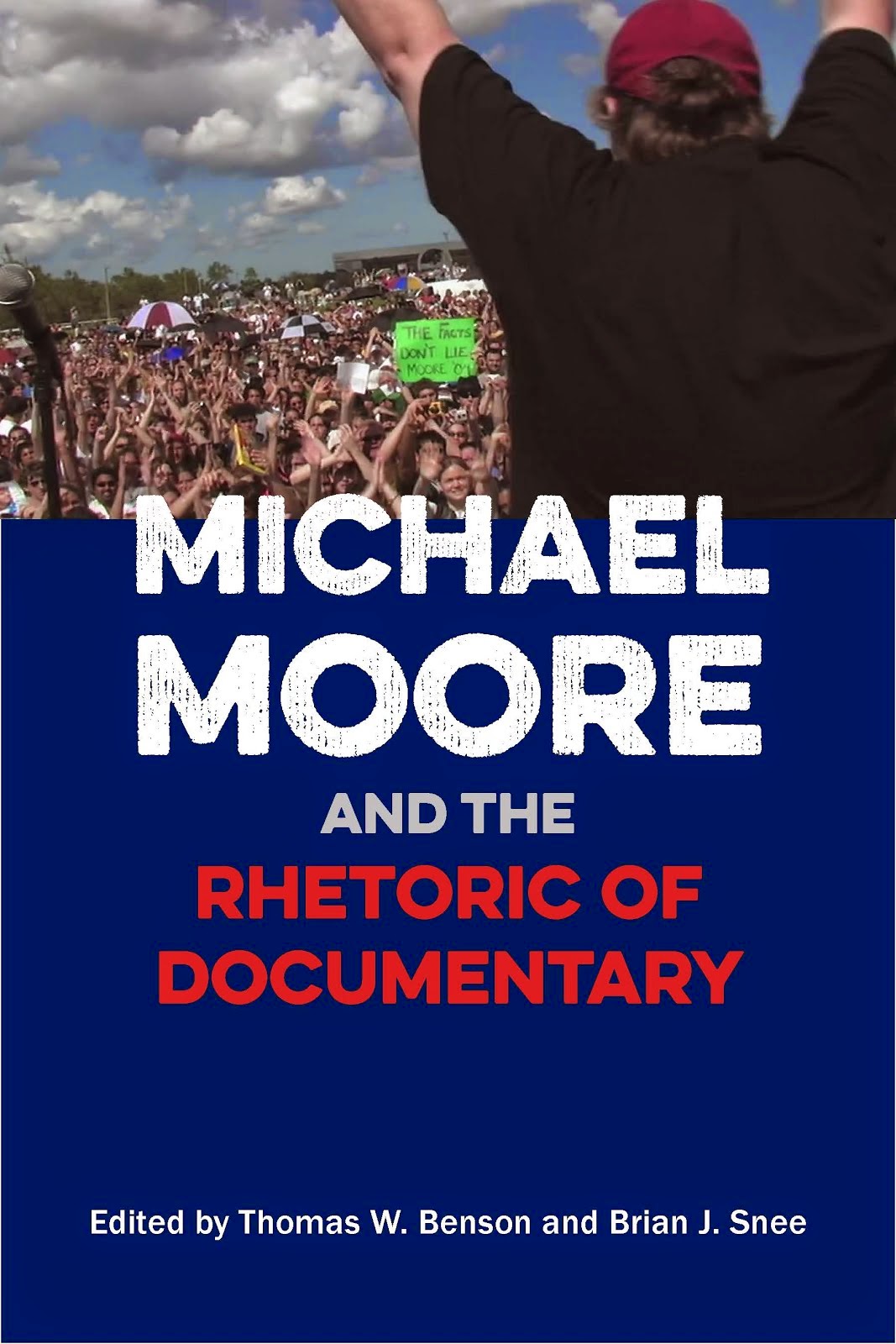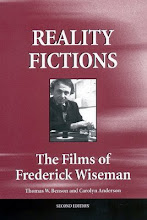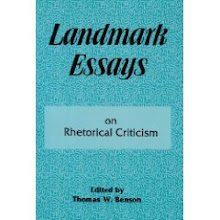. . . Whatever issue may come before me as president — on birth control, divorce, censorship, gambling or any other subject — I will make my decision in accordance with these views, in accordance with what my conscience tells me to be the national interest, and without regard to outside religious pressures or dictates. And no power or threat of punishment could cause me to decide otherwise. . . .
Tuesday, February 28, 2012
JFK vs. Rick Santorum
Monday, February 27, 2012
John T. Gage, editor, The Promise of Reason: Studies in The New Rhetoric (Carbondale, IL: Southern Illinois University Press, 2011).
from the publisher:
"No single work is more responsible for the heightened interest in argumentation and informal reasoning—and their relation to ethics and jurisprudence in the late twentieth century—than Chaïm Perelman and Lucie Olbrechts-Tyteca’s monumental study of argumentation, La Nouvelle Rhétorique: Traité de l'Argumentation. Published in 1958 and translated into English as The New Rhetoric in 1969, this influential volume returned the study of reason to classical concepts of rhetoric. In The Promise of Reason: Studies in The New Rhetoric, leading scholars of rhetoric Barbara Warnick, Jeanne Fahnestock, Alan G. Gross, Ray D. Dearin, and James Crosswhite are joined by prominent and emerging European and American scholars from different disciplines to demonstrate the broad scope and continued relevance of The New Rhetoric more than fifty years after its initial publication.
"Divided into four sections—Conceptual Understandings of The New Rhetoric, Extensions of The New Rhetoric, The Ethical Turn in Perelman and The New Rhetoric, and Uses of The New Rhetoric—this insightful volume covers a wide variety of topics. It includes general assessments of The New Rhetoric and its central concepts, as well as applications of those concepts to innovative areas in which argumentation is being studied, such as scientific reasoning, visual media, and literary texts. Additional essays compare Perelman’s ideas with those of other significant thinkers like Kenneth Burke and Richard McKeon, explore his career as a philosopher and activist, and shed new light on Perelman and Olbrechts- Tyteca’s collaboration. Two contributions present new scholarship based on recent access to letters, interviews, and archival materials housed in the Université Libre de Bruxelles. Among the volume’s unique gifts is a personal memoir from Perelman’s daughter, Noémi Perelman Mattis, published here for the first time."
Digital Divide
from the publisher -- table of contents --
Introduction: Globalization and the Digital Divide: Understanding the Connections between Technology and Communication in a Global Context (Kirk St. Amant)
Chapter 1: The Spread of Culture under the Umbrella of Globalization (Tugba Kalafatoglu)
Chapter 2: Traditional Cultures and their Effects on Globalization: An African Perspective (Kehbuma Langmia)
Chapter 3: The Role of Appropriate ICT in Bridging the Digital Divide: Theoretical Considerations and Illustrating Cases (Victor van Reijswoud and Arjan de Jager)
Chapter 4: Wireless Networking Bridges the Digital Divide in Africa (Anas Tawileh)
Chapter 5: The Container Project in Rural Jamaica: Socializing Technology and Unleashing Creativity along the Digital Divide (Francesca da Rimini)
Chapter 6: The Web Presence of European and Middle Eastern Countries: A Digital Divide (Alireza Noruzi)
Chapter 7: The Digital Divide in China: Socioeconomic and Cultural Dimensions (Yun Xia)
Chapter 8: Globalization, Epidemics, and Politics: Communicating Risk in the Digital Age (Yasmin Ibrahim)
Chapter 9: The Commercialization of Higher Education and Knowledge as a Global Trend: Implications for the Digital Divide in Developing Countries (Tatjana Takševa)
Saturday, February 25, 2012
The Daisy Girl Ad
Robert Mann, Daisy Petals and Mushroom Clouds: LBJ, Barry Goldwater, and the Ad That Changed American Politics (Baton Rouge: Louisiana State University Press, 2011).
from the publisher:
"The grainy black-and-white television ad shows a young girl in a flower-filled meadow, holding a daisy and plucking its petals, which she counts one by one. As the camera slowly zooms in on her eye, a man’s solemn countdown replaces hers. At zero the little girl’s eye is engulfed by an atomic mushroom cloud. As the inferno roils in the background, President Lyndon B. Johnson’s voice intones, “These are the stakes—to make a world in which all of God’s children can live, or to go into the dark. We must either love each other, or we must die.”
In this thought-provoking and highly readable book, Robert Mann provides a concise, engaging study of the “Daisy Girl” ad, widely acknowledged as the most important and memorable political ad in American history. Commissioned by Johnson’s campaign and aired only once during Johnson’s 1964 presidential contest against Barry Goldwater, it remains an iconic piece of electoral propaganda, intertwining cold war fears of nuclear annihilation with the increasingly savvy world of media and advertising. Mann presents a nuanced view of how Johnson’s campaign successfully cast Barry Goldwater as a radical too dangerous to control the nation’s nuclear arsenal, a depiction that sparked immediate controversy across the United States.
Repeatedly analyzed in countless books and articles, the spot purportedly destroyed Goldwater’s presidential campaign. Although that degree of impact on the Goldwater campaign is debatable, what is certain is that the ad ushered in a new era of political advertising using emotional appeals as a routine aspect of campaign strategy."
Friday, February 24, 2012
Animal Narratives in the Media

Claire Molloy, Popular Media and Animals (New York: Palgrave Macmillan, 2011).
from the publisher:
"How do mainstream films, television, advertising, videogames and newspapers engage with key animal issues such as vivisection, hunting, animal performance, farming, meat eating and animal control?
Claire Molloy argues that animal narratives and imagery are economically significant for popular media industries which, in turn, play an important role in shaping the limits and norms of public discourses on animals and animal issues. Through analysis of various popular examples this book grapples with some of the industrial, social, cultural and ethical aspects of media discourses on animals. By examining how popular media forms constitute key sources of information, definitions and images, the author explores some of the myriad ways in which media discourses sustain a range of constructions of animals that are connected, appropriated or co-opted by other systems of production and so play a role in the normalisation of particular practices."
Nature's Image

Janice Neri, The Insect and the Image: Visualizing Nature in Early Modern Europe, 1500-1700 (Minneapolis: University of Minnesota Press, 2011).
from the publisher:
"The Insect and the Image explores the ways in which visual images defined the insect as a proper subject of study for Europeans of the early modern period. Revealing how sixteenth- and seventeenth-century artists and image makers shaped ideas of the natural world, Janice Neri enhances our knowledge of the convergence of art, science, and commerce today."
Ralph M. Faust
http://www.oswego.edu/~ruddy/Buffalo%20Papers/Dissertation/Chapter%2004.pdf
Michael Berube on adjunct faculty
The New Faculty Majority (NFM) summit Reclaiming Academic Democracy: Facing the Consequences of Contingent Employment in Higher Education, held on Saturday, 28 January, at the Grand Hyatt in Washington, DC, was full of bitter ironies. The gathering was convened in conjunction with the annual meeting of the Association of American Colleges and Universities (AAC&U). But when Carol Geary Schneider, president of the AAC&U, asked in the opening plenary session who had availed themselves of the “crosswalk” she had established between the AAC&U and the NFM, it became distressingly clear that for most AAC&U members “in conjunction with” apparently meant little more than “in the same hotel as.” At one end of the long hallway, NFM members talked about the challenges of keeping body and soul intact while teaching 4-4 jobs to which they had been required to reapply every year for twenty years; at the other end, university administrators browsed a book exhibit whose keywords seemed to be finance, management, outcomes, and assessment. At one point in the NFM proceedings, a faculty member from Oakland Community College held up a handbook for deans she’d purchased at the other end of the hallway and noted that adjunct faculty merited only one mention, under the heading “budgets.” . . . (more)
from the MLA blog, Michael Berube, "Among the Majority," FROM THE PRESIDENT, MLA blog.
The Adjunct Project
"The Adjunct Project is a way for us to compile data on treatment of contingent faculty. Combining our knowledge and resources will help us all to better understand the reality of life as an adjunct professor. The goal of this website is to identify universities that set the standard for best practices with regard to adjuncts. The best schools should be recognized and honored for what they are doing. The project is also designed to promote transparency in higher education employment practices for the sake of teachers, students, and parents."
Tuesday, February 21, 2012
Visual Information

Manuel Lima, Visual Complexity: Mapping Patterns of Information (New York: Princeton Architectural Press, 2011).
See also the blog Visualcomplexity.com
Monday, February 20, 2012
Democracy and News

Bruce A. Williams and Michael X. Delli Carpini, After Broadcast News: Media Regimes, Democracy, and the New Information Environment (Cambridge: Cambridge University Press, 2011).
from the publisher:
"The new media environment has challenged the role of professional journalists as the primary source of politically relevant information. After Broadcast News puts this challenge into historical context, arguing that it is the latest of several critical moments, driven by economic, political, cultural and technological changes, in which the relationship among citizens, political elites and the media has been contested. Out of these past moments, distinct 'media regimes' eventually emerged, each with its own seemingly natural rules and norms, and each the result of political struggle with clear winners and losers. The media regime in place for the latter half of the twentieth century has been dismantled, but a new regime has yet to emerge. Assuring this regime is a democratic one requires serious consideration of what was most beneficial and most problematic about past regimes and what is potentially most beneficial and most problematic about today's new information environment."
The Road to Economic Feudalism?
Thomas B. Edsall, "Is This the End of Market Democracy?" New York Times, 20 February 2012.
Saturday, February 18, 2012
Tourism and Imagination

Jonathan Skinner and Dimitrios Theodossopoulos, Great Expectations: Imagination and Anticipation in Tourism (New York: Berghahn Books, 2011)
table of contents, from the publisher:
Chapter 1. Introduction:The Play of Expectation in Tourism
Jonathan Skinner & Dimitrios TheodossopoulosChapter 2. Success and Access to Knowledge in the Tourist-local Encounter: Confrontations with the Unexpected in a Turkish Community
Hazel TuckerChapter 3. Emberá Indigenous Tourism and the World of Expectations
Dimitrios TheodossopoulosChapter 4. The Paradox of Gaze and Resistance in Native American Cultural Tourism: An Alaskan Case Study
Alexis Celeste BuntenChapter 5. Forward into the past: 'Digging' the Balearic Islands
Jacqueline WaldrenChapter 6. On Difference, Desire, and the Aesthetics of the Unexpected: The White Masai in Kenyan Tourism
George Paul MeiuChapter 7. Displeasure on ‘Pleasure Island’: tourist expectation and desire on and off the Cuban dance floor
Jonathan SkinnerChapter 8. The Coach Fellas: Tourism performance and expectation in Ireland
Kelli Ann MaloneChapter 9. Going on Holiday to Imagine War: The Western Front Battlefields as Sites of Commemoration and Contestation
Jennifer IlesChapter 10. Touring the Dead: Imagination, Embodiment and Affect in Gunter Von Hagen’s Body Worlds Exhibitions
Jane DesmondChapter 11. Afterword: The Tour as Imagined, Lived, Experienced, and Told
Ed Bruner
Friday, February 17, 2012
Contraception’s Con Men by Garry Wills | NYRblog | The New York Review of Books
Garry Wills, "Contraception's Con Men," New York Review of Books
Contraception’s Con Men by Garry Wills | NYRblog | The New York Review of Books
Letters and Public Advocacy

Samuel McCormick, Letters to Power: Public Advocacy without Public Intellectuals (University Park: Pennsylvania State University Press, 2011).
from the publisher:
“The category of the public intellectual is fraught with contradictions: politics and culture, theory and practice, philosophy and rhetoric. If only there were a genre to mediate these tensions to good effect. Letters to Power reminds us that there was, and is: the ‘minor rhetoric’ of the public letter. Samuel McCormick’s skillful readings provide numerous insights regarding the predicaments and strategies shaping learned advocacy. By focusing on things small and sly, he shows how public culture can be improved by careful thinkers doing humble work.” —Robert Hariman, Northwestern University, editor of Prudence: Classical Virtue, Postmodern Practice (Penn State, 2003)Although the scarcity of public intellectuals among today’s academic professionals is certainly a cause for concern, it also serves as a challenge to explore alternative, more subtle forms of political intelligence. Letters to Power accepts this challenge, guiding readers through ancient, medieval, and modern traditions of learned advocacy in search of persuasive techniques, resistant practices, and ethical sensibilities for use in contemporary democratic public culture. At the center of this book are the political epistles of four renowned scholars: the Roman Stoic Seneca the Younger, the late-medieval feminist Christine de Pizan, the key Enlightenment thinker Immanuel Kant, and the Christian anti-philosopher Søren Kierkegaard. Anticipating much of today’s online advocacy, their letter-writing helps would-be intellectuals understand the economy of personal and public address at work in contemporary relations of power, suggesting that the art of lettered protest, like letter-writing itself, involves appealing to diverse, and often strictly virtual, audiences. In this sense, Letters to Power is not only a nuanced historical study but also a book in search of a usable past.
Tuesday, February 14, 2012
Conversational Rhetoric

Jane Donawerth, Conversational Rhetoric: The Rise and Fall of a Women's Tradition, 1600-1900. Carbondale: Southern Illinois University Press, 2011.
from the publisher:
Much of the scholarly exchange regarding the history of women in rhetoric has emphasized women’s rhetorical practices. In Conversational Rhetoric: The Rise and Fall of a Women’s Tradition, 1600–1900, Jane Donawerth traces the historical development of rhetorical theory by women for women, studying the moments when women produced theory about the arts of communication in alternative genres—humanist treatises and dialogues, defenses of women’s preaching, conduct books, and elocution handbooks. She examines the relationship between communication and gender and between theory and pedagogy and argues that women constructed a theory of rhetoric based on conversation, not public speaking, as a model for all discourse.
Donawerth traces the development of women’s rhetorical theory through the voices of English and American women (and one much-translated French woman) over three centuries. She demonstrates how they cultivated theories of rhetoric centered on conversation that faded once women began writing composition textbooks for mixed-gender audiences in the latter part of the nineteenth century. She recovers and elucidates the importance of the theories in dialogues and defenses of women’s education by Bathsua Makin, Mary Astell, and Madeleine de Scudéry; in conduct books by Hannah More, Lydia Sigourney, and Eliza Farrar; in defenses of women’s preaching by Ellen Stewart, Lucretia Mott, Catherine Booth, and Frances Willard; and in elocution handbooks by Anna Morgan, Hallie Quinn Brown, Genevieve Stebbins, and Emily Bishop. In each genre, Donawerth explores facets of women’s rhetorical theory, such as the recognition of the gendered nature of communication in conduct books, the incorporation of the language of women’s rights in the defenses of women’s preaching, and the adaptation of sentimental culture to the cultivation of women’s bodies as tools of communication in elocution books.
Rather than a linear history, Conversational Rhetoric follows the starts, stops, and starting over in women’s rhetorical theory. It covers a broad range of women’s rhetorical theory in the Anglo-American world and places them in their social, rhetorical, and gendered historical contexts. This study adds women’s rhetorical theory to the rhetorical tradition, advances our understanding of women’s theories and their use of rhetoric, and offers a paradigm for analyzing the differences between men’s and women’s rhetoric from 1600 to 1900.


